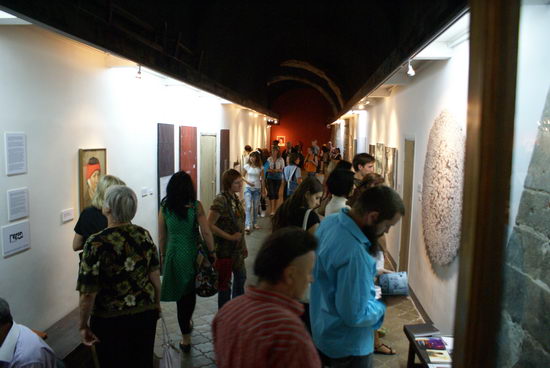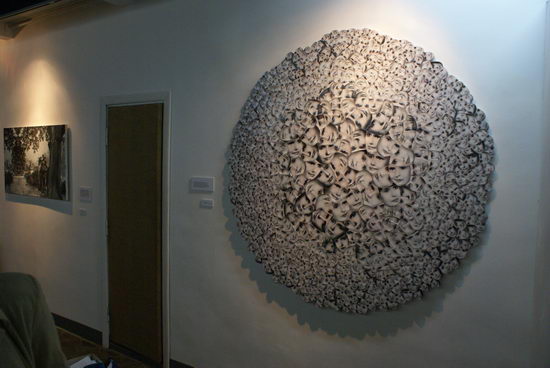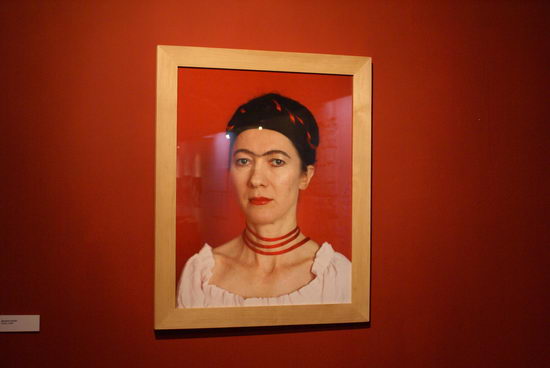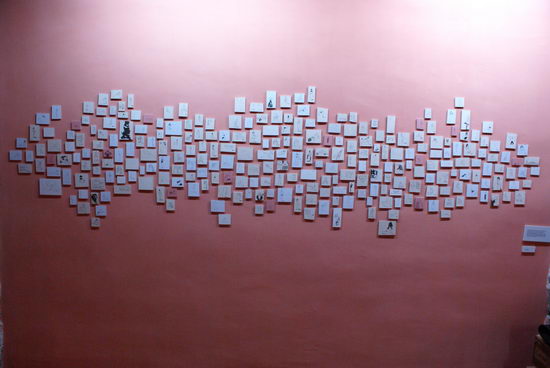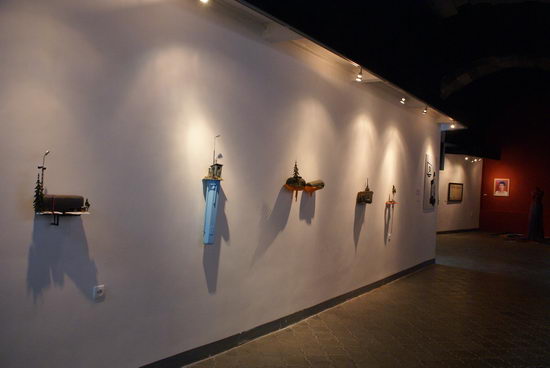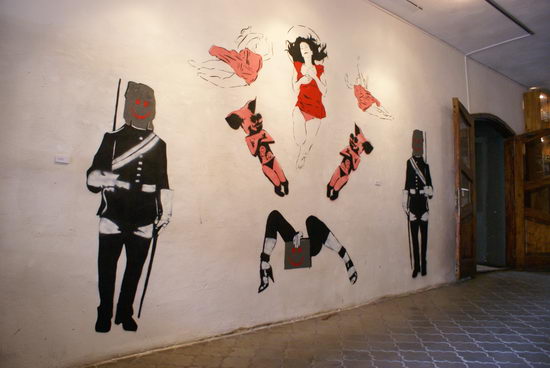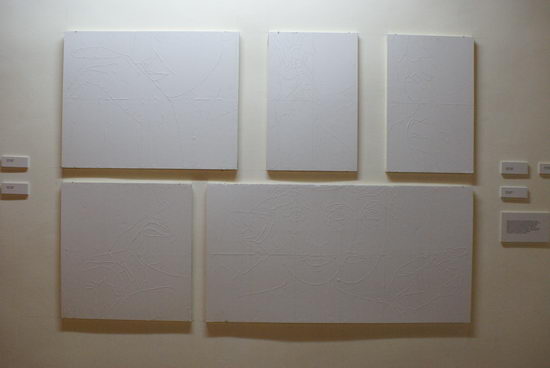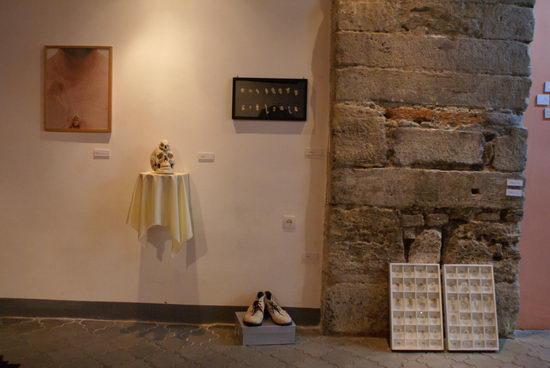Between Abstraction and Realism
Tomasz Bielak, Krzysztof Bryła, Kama Bubicz, Eliza Galey, Jan Gryka, Karolina Komorowska, Danuta Kuciak, Anna Nawrot, Irena Nawrot, Ilona Oszust, Paulina Sadowska, Kamil Stańczak
Opening: 21.08.2010, opening hour: 18.00
Open until: 15.09.2010

The exhibition, by the hosting gallery entitled Between Abstraction and Realism, is a presentation of 12 Lublin artists who collaborate with the Biała Gallery. (Magdalena Bicz, Paulina Kara and Mariusz Tarkawian, also connected with Biała, exhibited their works in Lviv in 2008).
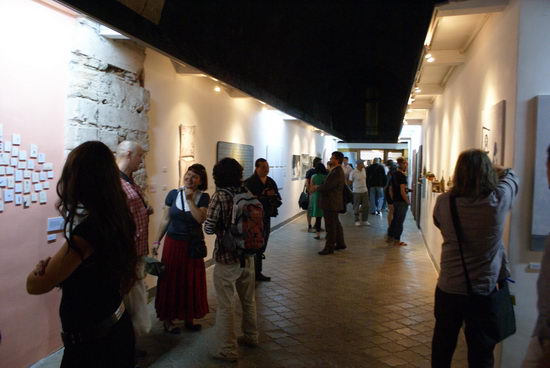
Most of the artists presented at the exhibition graduated from the Faculty of Arts of the Maria Curie-Skłodowska Universty with the exception of Kama Bubicz, Ilona Oszust and Krzysztof Bryła, who still study at MCSU and Tomasz Bielak, who graduated from the Academy of Fine Arts in Gdańsk. They all live in Lublin. Biała’s mission has always been to create its own artistic space for up-to-date and experimenting art that reflects local trends. Therefore, the aim of this exhibition is to present Biała’s spectrum of interest and local artists have always been supported and exhibited there.
The exhibition presents various works from paintings, drawings, installations, objects, photography, films to intervention painting that appeared in a dilapidated jam factory.
Both expositions, the one in the gallery and the one in the factory, were jointly prepared by the artists from Lublin.
Between abstraction and realism makes space for the most universal message of art, as it implies hundreds of meanings. Important for the choice of works and artists is the “in between” part. Art that is “in between” remains undefined in relation to the subject, transgression, sign, designate, reality, fiction, concretum, idea, inspiration…
Putting these works together we wanted to broaden the scope of meanings in the sphere between image and meaning, between sign and concrete, between subjects, narrations…
___
Tomasz Bielak (born 1967) makes black and white visual signs and stickers with short text messages. Placing them on walls, bus stops, inside busses and lifts, he makes witty, often ironic comments about common social paradoxes. He creates an original alphabet of human behaviours and tendencies, economical in form but carrying a lot of meanings and allusions.
___
The most important motif of Krzysztof Bryła’s (born 1984) painting is the world of things around him. The artist creates visual replicas of real objects. This exhibition presents paintings of doors that can be seen in Kazimierz Dolny, a town that is a tourist attraction of the Lublin region. Interacting with the doors in the Dzyga Gallery, they provoke an interesting game of meanings.
___
Karolina Komorowska (born 1881) works in a similar way. She paints objects from her family home enriching them with her personal history. She is very precise depicting the objects at a 1:1 scale, but she leaves a trace of human intervention. Those everyday articles such as a mattress or a pillow carry a visual message and become, at the same time, exceptional works of art.
___
The work of Irena Nawrot (born 1960) is composed of hundreds of black and white portraits of herself, her sister, daughter and her parents sewed together to form something what looks like a photographic version of a wall-hanging or a mandala. The artist is consistent in using photography as her medium. Through photography she talks about the body, the image of herself and her loved ones, keeping tract of the passing of time.
___
In her colour photographs Danuta Kuciak (born 1963) reproduces word-famous paintings and, at the same time, images of Vincent van Gogh and Frieda Kahlo. Those self-portraits of the artist juxtapose different cannons of contemporary art, playing with the images present in the media and culture.
___
Kama Bubicz’s (born 1986) drawings are visual interpretations of the word bitch. Some of its meanings are: a vulgar word used to describe skimpily dressed women in various poses, a slang word for a police car, or a local musical instrument. However, its first meaning is “a female dog”. The number of her works is proportional to the number of entries of the word bitch she found in a web search engine. She gathered hundreds of drawings presenting different representations of this word, also from the statistical point of view.
___
Objects by Kamil Stańczak (born 1980) are perfectly made dioramas. Those are miniature fragments of the outside world, pieces of worn out and “out-of-date” architecture existing somewhere in the outskirts of cities. The use of many elements, such as dried insects, spilled paint may be a surprise to a viewer. They make up very picturesque fragments of landscapes taken from some other reality, degraded but possible to exist in reality.
___
In her works Ilona Oszust (born 1986) Is looking for connections with street art. She uses stencils to paint both on canvas and walls. The combination of spray and stencils is an ironic mix of contemporary motifs that can be seen in the media. Putting together street and media imagery, she creates a fresh and multidimensional structure.
___
Eliza Galey (born 1978) has been consequently using the Braille communication method as the means of her artistic expression. Her works are a challenge to our visual perception and a drastic intervention into the structure of the paper. They refer to the sense of touch, hearing, smell, taste, sight and the influence on perception. They also play with the meanings of such words as visible – invisible – palpable.
___
The main area of Paulina Sadowska’s (born 1985) interest are the archival collections of photographs from the 1st half of the 20th century. She animates the photos to bring them back to life. She adds some movement to the landscapes or people depicted, for example, by making them breath or rising their hands, making leaves move in the wind. Those photos inspired her as well to create monochrome black and white paintings. Neither the paintings nor the animations are identical to the photos. With their ambiguous narration and context, they usually refer to some dreamy world of fantasy. Such are also the works from the series “Wonder wonder land”.
___
Jan Gryka (born 1959) since 2001, uses a dry dough particles that are left after the exhibition in the Biała Gallery – TYPE 650 (trade mark of flour, appearing on the package). Works and objects that have emerged are constantly mutating due to intruders – pests and other animals. Part of the work has been irretrievably consumed, some still functioning, and these objects and their documentation form part of the exhibition – History of crumbs – remains.
___
Anna Nawrot (born 1960) – when I arrived in Lviv in April this year, Marek from the Dzyga Gallery showed me a tree with ties. That’s why I decided to present an object composed of a female dummy and hundreds of ties. I bought them all in second hand shops. I dedicate this project to Marek. Although it is built from the same material, it is not as flimsy as his.


